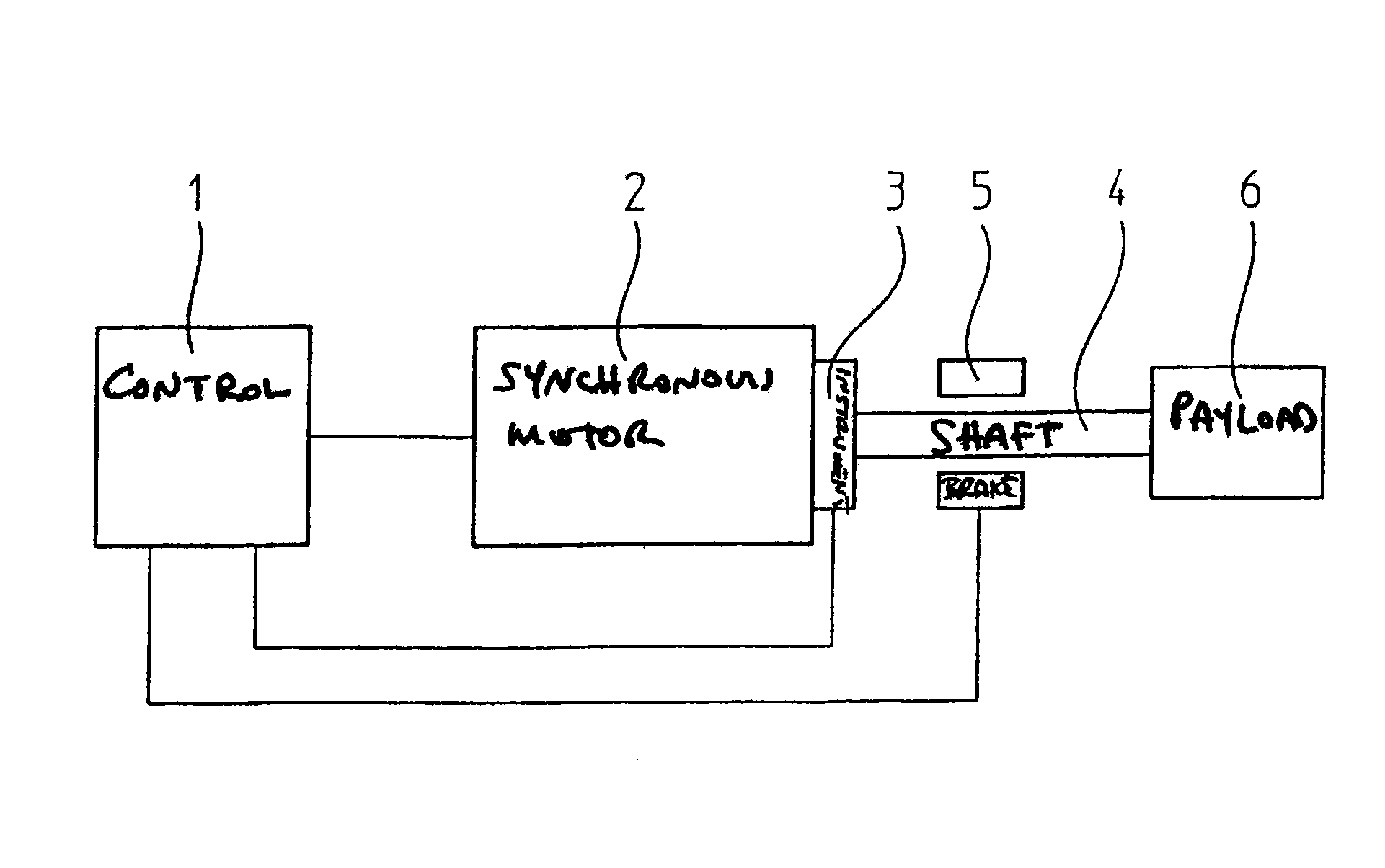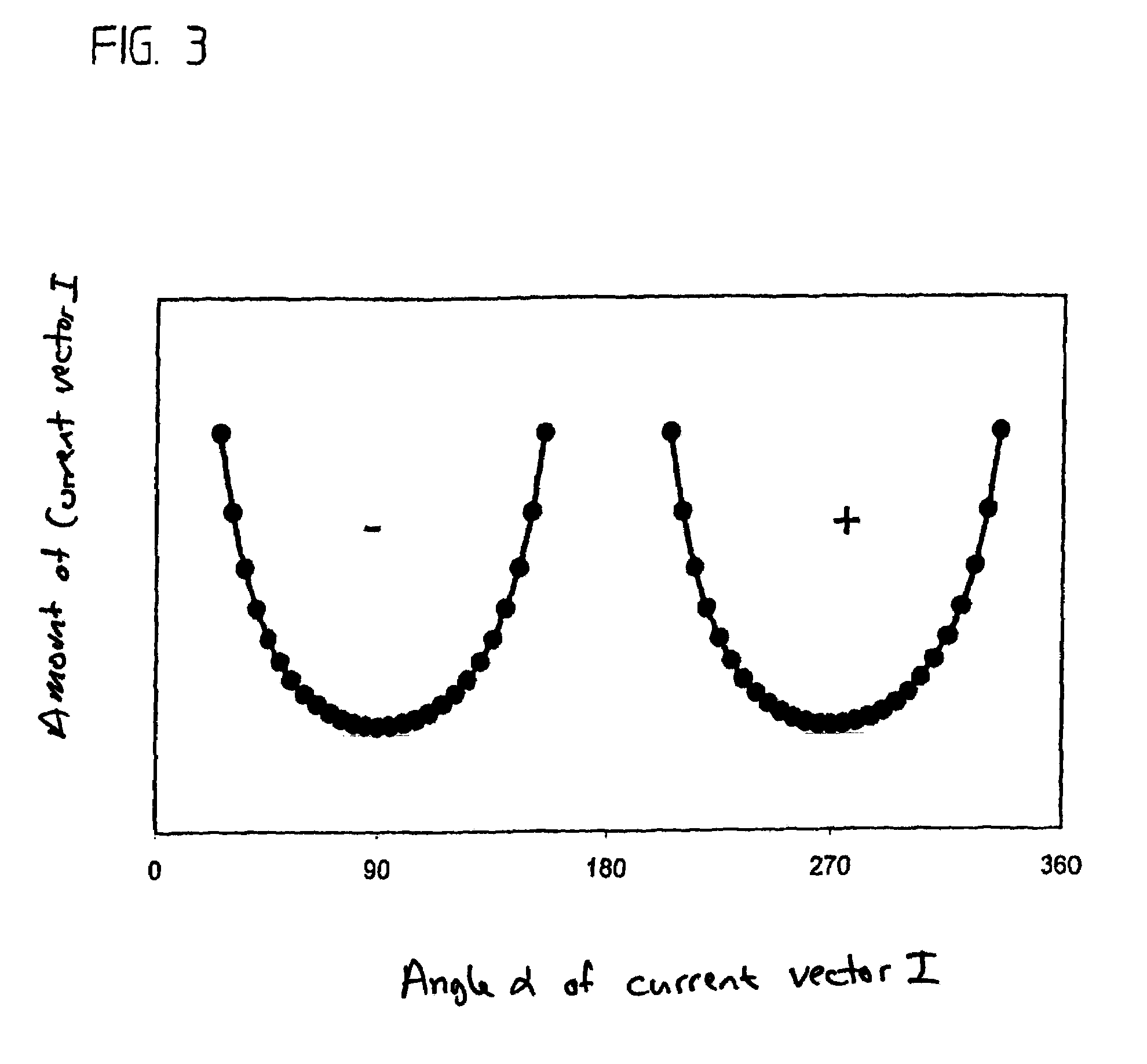Method for determining the rotor position of a synchronous motor
a synchronous motor and rotor position technology, applied in the direction of synchronous motor starters, single motor speed/torque control, electronic commutators, etc., can solve the problems of increasing the current needed for generating a rotor movement, affecting the synchronous motor's synchronous motor's synchronous motor's synchronous motor, and affecting the synchronous motor's synchronous motor's synchronous motor. the effect of increasing the current required
- Summary
- Abstract
- Description
- Claims
- Application Information
AI Technical Summary
Benefits of technology
Problems solved by technology
Method used
Image
Examples
Embodiment Construction
[0017]FIG. 1 illustrates a drive unit having a synchronous motor 2 that is triggered via a control 1. The rotor position of synchronous motor 2 is monitored via a position-measuring instrument 3 that, for example, may be an incremental rotary transducer that only allows the calculation of absolute position values after a reference point has been overtravelled. Position-measuring instrument 3 is connected to shaft 4 of synchronous motor 2. Since shaft 4 is rigidly connected to the rotor of synchronous motor 2, it is possible to infer the position of the rotor from the position of shaft 4. If necessary, a brake 5 may act upon shaft 4. Such mechanical or electrical brakes 5 may be used to quickly brake movements in case of emergency or to keep suspended axles in the de-energized state. Brake 5 may be activated via control 1. A payload 6 is driven via shaft 4. For example, this may be the tool spindle of a machine tool, or also a linear axle of the machine tool that is driven via a spin...
PUM
 Login to View More
Login to View More Abstract
Description
Claims
Application Information
 Login to View More
Login to View More - R&D
- Intellectual Property
- Life Sciences
- Materials
- Tech Scout
- Unparalleled Data Quality
- Higher Quality Content
- 60% Fewer Hallucinations
Browse by: Latest US Patents, China's latest patents, Technical Efficacy Thesaurus, Application Domain, Technology Topic, Popular Technical Reports.
© 2025 PatSnap. All rights reserved.Legal|Privacy policy|Modern Slavery Act Transparency Statement|Sitemap|About US| Contact US: help@patsnap.com



